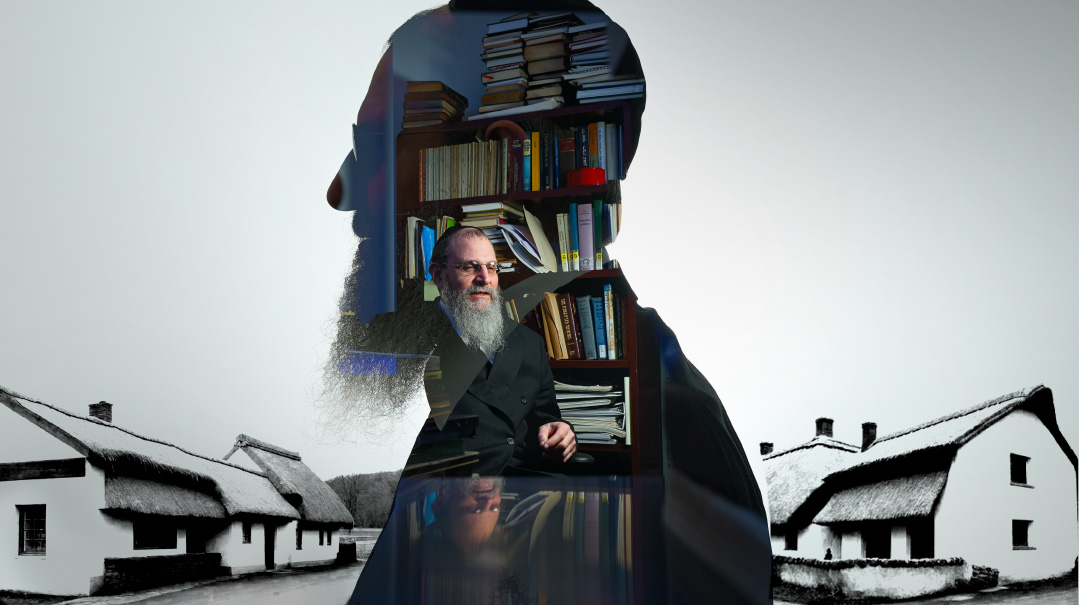Shtetl in Real Time

Researcher Michoel Rotenfeld revived a forgotten manuscript of a lost world

Photos: Naftoli Goldgrab
Many Jews grow up with nostalgic, Fiddler-on-the-Roof-style imaginings of the simple, pious life of the shtetl. But do such portrayals reflect the true reality of those times? Thanks to Michoel Rotenfeld’s new English-language translation of a Yiddish autobiography, The Shochet (1929), we now have a detailed, vivid, and unvarnished view of life in Ukraine in the second half of the 19th century. The author, Pinkhes-Dov Goldenshteyn (Pinye-Ber), an orphan from the town of Tiraspol, spares no details as he tells it like he saw it, and brings us along on his journeys through Eastern Europe, Crimea, and finally Eretz Yisrael.
“Most autobiographies during that time were written by maskilim,” explains Mr. Rotenfeld, whom we find half-hidden behind stacks of books at his desk at Touro University’s Cross River campus on 43rd Street in Manhattan, where he serves as associate director of libraries. “The maskilim would begin by talking about their impoverished, benighted childhoods in the shtetls and show how they rose to greater enlightenment and prosperity as they abandoned their origins. The Shochet is perhaps the only autobiography written by a frum Yid who stayed firm in his Yiddishkeit and related daily life in detail.”
Published by Touro University Press, The Shochet has been enthusiastically received as a major contribution to scholarship on Jewish life in Eastern Europe. It has been compared in significance to The Memoirs of Gluckl of Hameln, a 17th-century autobiography depicting the life of a Jewish woman in Germany. Both are frank, detailed accounts of frum Jewish life, a window into daily life that reveals both how much, and how little, has changed.
“This fills a unique niche as an account of Jewish communal life,” says Dr. Israel Singer, professor of Contemporary Jewry at Touro University, who wrote the preface to the book. “It’s a close-up of the life of klei kodesh in those days, arguably the first published account. It is also perhaps the first book about someone who decided to go live in Eretz Yisrael before the First World War.”
Michoel Rotenfeld’s journey to finding and translating this unique work took more than two decades, involving travel to Eretz Yisrael and Ukraine, consultation with Yiddish experts, and countless hours of research (evidenced by the lengthy introduction and bibliography at the end of the book). It was a journey brightened by many sparks of Hashgachah pratis.
“I would need more information about a certain subject matter I was researching for the book, and then I would come across a book on the subject in a used book store,” he says. “I searched for the author’s relatives, and found one who’d been looking to find a translator.”
Oops! We could not locate your form.







